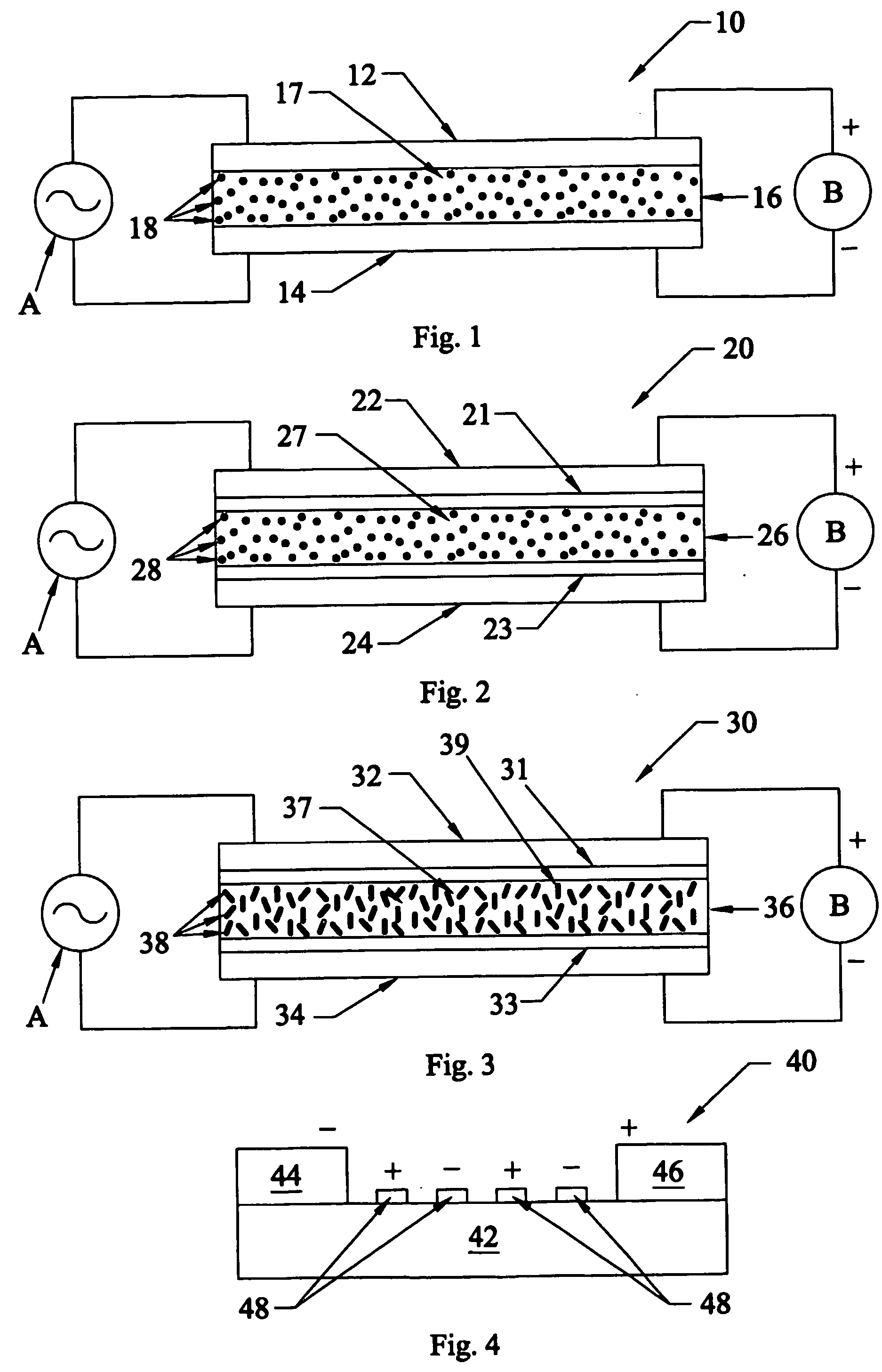Variable capacitors, composite materials
a capacitor and variable technology, applied in the field of variable capacitors, can solve the problems of affecting the charge carrier too quickly, the monoparticulate nature of the particulate may be lost, and the particular vulnerability of platinum particulates to being poisoned by carbon monoxide,
- Summary
- Abstract
- Description
- Claims
- Application Information
AI Technical Summary
Problems solved by technology
Method used
Image
Examples
embodiment 40
[0063] In FIG. 4, a further embodiment 40 of the capacitor of the present invention is shown. Capacitor 40 includes a dielectric material 42, having a first electrode 44, and a second electrode 46 on top of the dielectric 42. Between the electrodes 44 and 46 are a series of conductive strips 48 that interact with the RF field to increase the effective capacitance. Strips 48 may be electrically isolated, or may be connected (not shown) alternatively to a DC (or low frequency AC) biasing circuit for reasons described below. When a DC potential is applied to the electrodes 46 and 44 as shown by the + and - symbols, a DC voltage is induced in the strips 48 (also as shown by the + and - symbols). The symbols also represent the instantaneous biasing voltage that may be applied to strips 48, should they be connected to a biasing circuit.
[0064] Alternatively, strips 48 can be provided as a thin single layer between, but separate from, electrodes 44 and 46, to increase the dipoles strength. ...
example
[0071] A dielectric material layer, 0.345 microns thick comprising 33 mol % Pt and 66 mol % silica was deposited on a Pt-coated silicon substrate. Platinum particulates and silica were co-deposited from separate combustion chemical vapor deposition (CCVD) flames, such CCVD flame deposition being taught in U.S. Pat. No. 5,652,021. A second electrode layer made of silver was formed on the exposed surface of the dielectric layer. The capacitance in picofarads was measured at various biasing voltages. Results are as follows:
3 Biasing Voltage Capacitance 0 241.4 10 240.2 20 237.3 30 230.6 40 224.6
PUM
| Property | Measurement | Unit |
|---|---|---|
| biasing voltage | aaaaa | aaaaa |
| biasing voltage | aaaaa | aaaaa |
| electron/hole mobilities | aaaaa | aaaaa |
Abstract
Description
Claims
Application Information
 Login to View More
Login to View More - R&D
- Intellectual Property
- Life Sciences
- Materials
- Tech Scout
- Unparalleled Data Quality
- Higher Quality Content
- 60% Fewer Hallucinations
Browse by: Latest US Patents, China's latest patents, Technical Efficacy Thesaurus, Application Domain, Technology Topic, Popular Technical Reports.
© 2025 PatSnap. All rights reserved.Legal|Privacy policy|Modern Slavery Act Transparency Statement|Sitemap|About US| Contact US: help@patsnap.com


